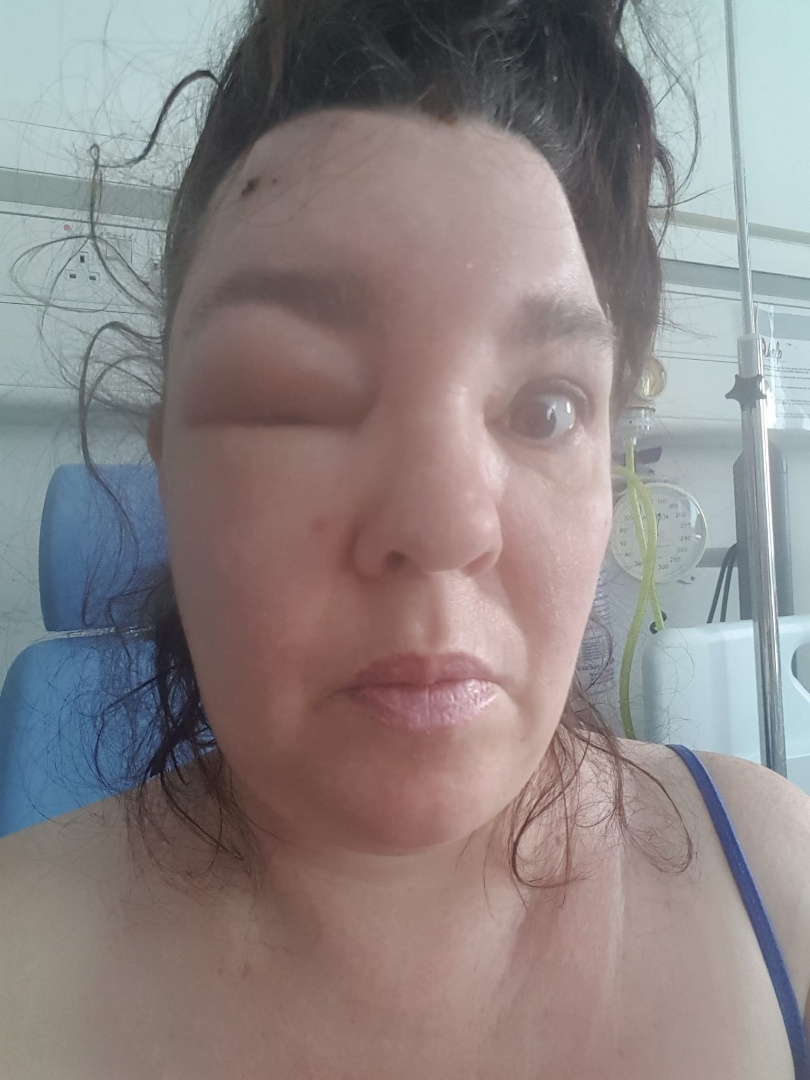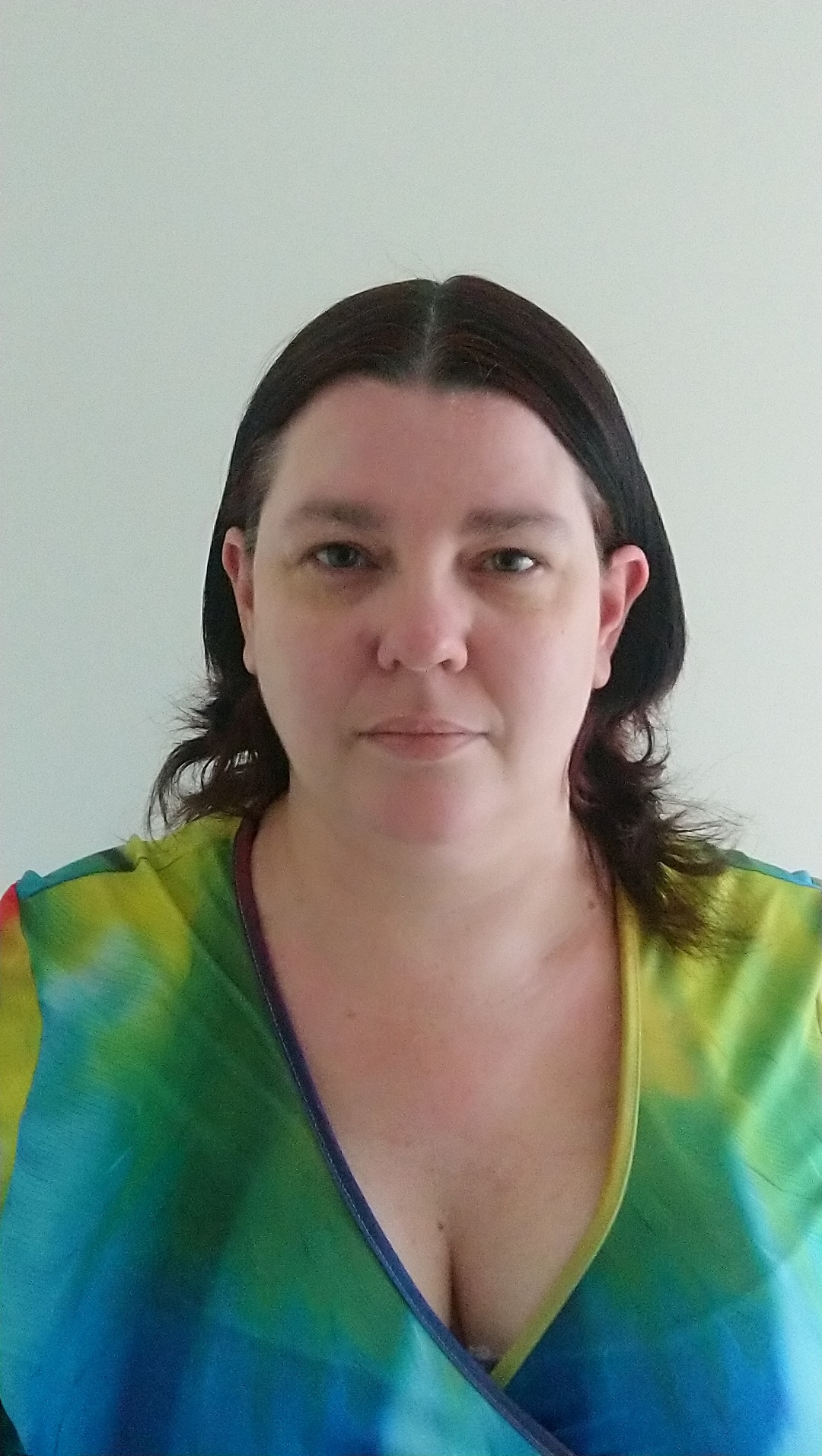“It’s a lonely, isolated tale, but I’m still here and slowly improving”
Jackie is a mum of 4 who is close to reaching 2 years post-operation on a pineocytoma. Jackie’s brain tumour journey tells of the isolation of having a brain tumour, and the impact that Covid-19 pandemic has had on the support people in the brain tumour community have been receiving. Despite the challenges she has faced, Jackie’s resilience shines through, and we’re grateful for her telling her story to the world.
Jackie’s story begins with a difficult start, she struggled with her mental health throughout her life, doing what she could to get by. It wasn’t until 2018 that Jackie felt her life take a turn for the better.
“I was in this limbo until 2018 when I suddenly felt so much better, I attended college and got my English G.C.S.E and trained as a level 2 teaching assistant.”
Unfortunately, a year later Jackie began to get symptoms that caused concern.

Jackie at Christmas just before her diagnosis
“Then 2019 came, I started having these ‘funny do’s’ I would go really off balance and hear a whooshing noise, I thought it was my blood pumping that I could hear, it was really strange, went to doctors and had ear drops. The sensations started getting worse as time went on, I went back to doctors several times, and to Accident and Emergency the times I actually collapsed. But nothing seemed wrong on the tests they performed.”
“Eventually by December 2019 I was referred to Ear, Nose and Throat, I had a lovely doctor who did multiple tests, he announced in January 2020 that he thought I had Meniere’s disease, I thought we had finally cracked it and I could start to take steps to becoming better, on my final visit he told me that I would need an MRI scan.”
Everything changed yet again…
After a long time searching for the answer to these symptoms, Jackie finally thought she had found the cause. But when she received a phone call from her doctor telling her there was a lot of fluid on her MRI Scan, everything changed yet again.
The process that followed was long, and Jackie continued to face a lot of uncertainty waiting for results, unsure of what she was going to find out. By March 2020, her symptoms had taken a turn for the worse. Rushed into hospital, Jackie then had more MRI scans and tests.
“I am having a particularly rough day, my husband is making tea, I am sat on couch, when I suddenly felt myself unable to move, I had fallen sideways and couldn’t speak, my Husband frantically called for an ambulance.”
“By the time they arrived I could move and talk again, they took me to A and E, eventually I managed to talk the doctor into giving me a scan as they were ready to send me home. An hour after the scan, a different doctor came, he said they would be checking me every hour and I had to go to Salford first thing in the morning. I argued saying I felt fine and a bit like a fraud as I was normal again, he chuckled nicely and said, “no you really need to be here.” I thought it odd but just lay down and rested.”
It was at this point that Jackie finally received her diagnosis.
“Later that day a lady doctor came to see me, she explained I had a Lesion on my pineal gland, which had blocked my CSF from draining and this was causing all my symptoms, she and her team were surprised I didn’t have more symptoms. The very next day I had a third ventriculostomy, which went really well, except I had a low-pressure headache for two days”
Jackie’s diagnosis came amidst the first news of lockdowns in the UK, whilst Jackie was processing her news and learning about her treatment path, the NHS and the rest of the country was beginning to feel the effects of the pandemic as we entered the first lockdown.
“Then things got weird, within a matter of hours anyone who was well enough to leave left. I was one of the last people on that ward, all the nurses were hushed and less jovial than usual, everyone was cleaning.”

Jackie just after her surgery
“I went home, recovering nicely from the surgery, 10 days before my stitches could come out, we entered lockdown.”
It wasn’t easy going through treatment during the pandemic and Jackie felt the effects of isolation as she navigated her brain tumour journey.
“I had no real visitors or help or advise or friends to chat to, luckily, I did have my husband and 3 of my children at home. My big operation was delayed from early May to late June, not a big delay but still worrying. I had been prepared for at least a 2 week stay in hospital, doing research online and speaking via email to a lovely lady from your team.”
After delays and a worrying wait, Jackie went in for her operation.
“My operation started early on a Thursday morning, they telephoned my husband around 14 hours later saying it was successful and I was in recovery. I don’t remember much of Thursday night except a nurse stayed with me for hours, I remember the comforting feel of some leg massage boots though.”
The side effects of the operation were tough. Jackie found herself in a lot of pain, dealing with facial swelling and sickness.
“Monday morning arrived, and my nurse came and told me I was going home. My jaw was on the floor but I jumped at the chance, it was quite scary being the only patient on a ward. It was very isolating even with nurses, there was no one going through what I was, no one to talk or rant or console, just me.”

Jackie now, 2 years later, looking ahead with positivity
“My dad came and got and took me home. It was great being there, but also scary for me, my kids and my husband if something went wrong. We had no help and I looked like a monster, I had to literally lift my water eye bags up to see!”
Recovering in lockdown presented a lot of challenges, exacerbating the isolation that brain tumour patients often feel. Luckily with the support of her husband and children Jackie was able to recover well.
“As everyone was in lockdown we had no help, no visitors, no chance for our son to go to grandmas or anything. Just me looking horrific and my husband having to work and nurse me, (my older children 18 and 15 helped too). I could only see people if they drove by.”
“All went well though thankfully. Except one incident when I convinced my husband I could just have my medication without breakfast – big mistake, I nearly passed out whilst on the toilet. It’s a good job he loves me!”
Jackie is just coming up to her two-year check-up and has spent the last twelve months home-schooling her youngest son. After a long and difficult journey, Jackie looks the future with a positive outlook ending her story with these words of resilience:









